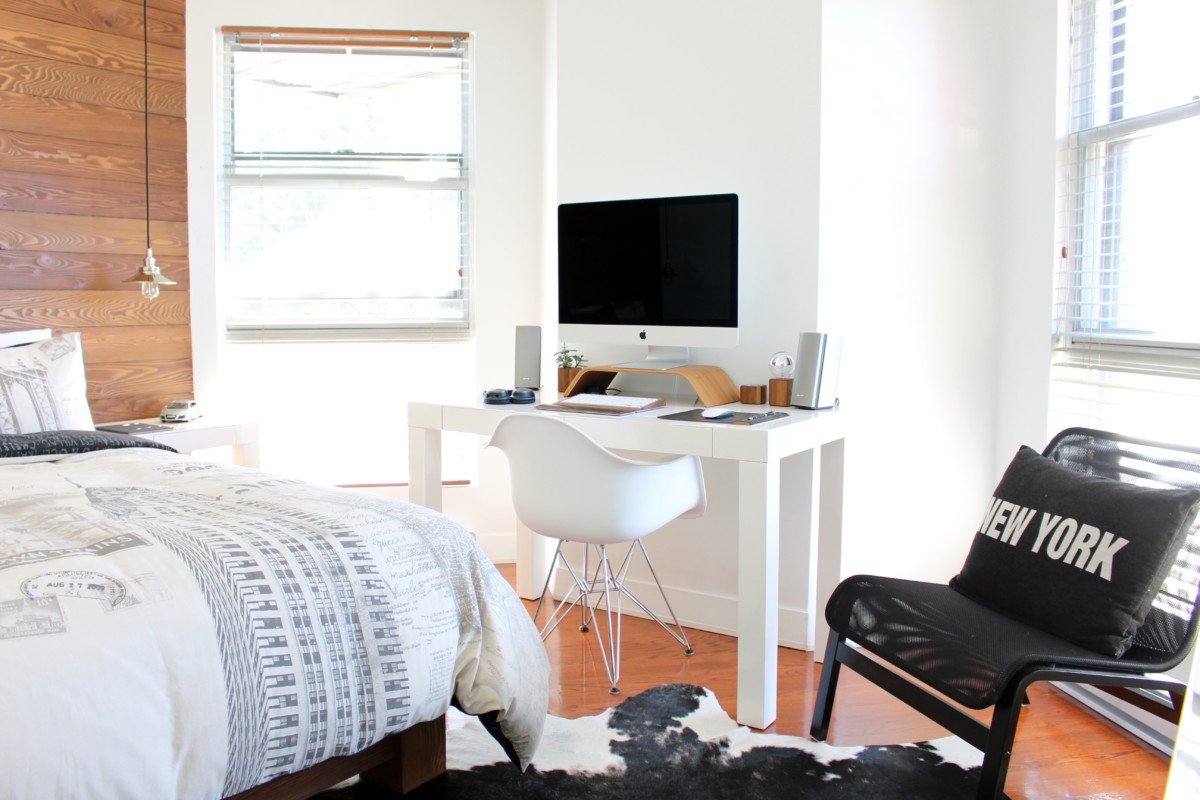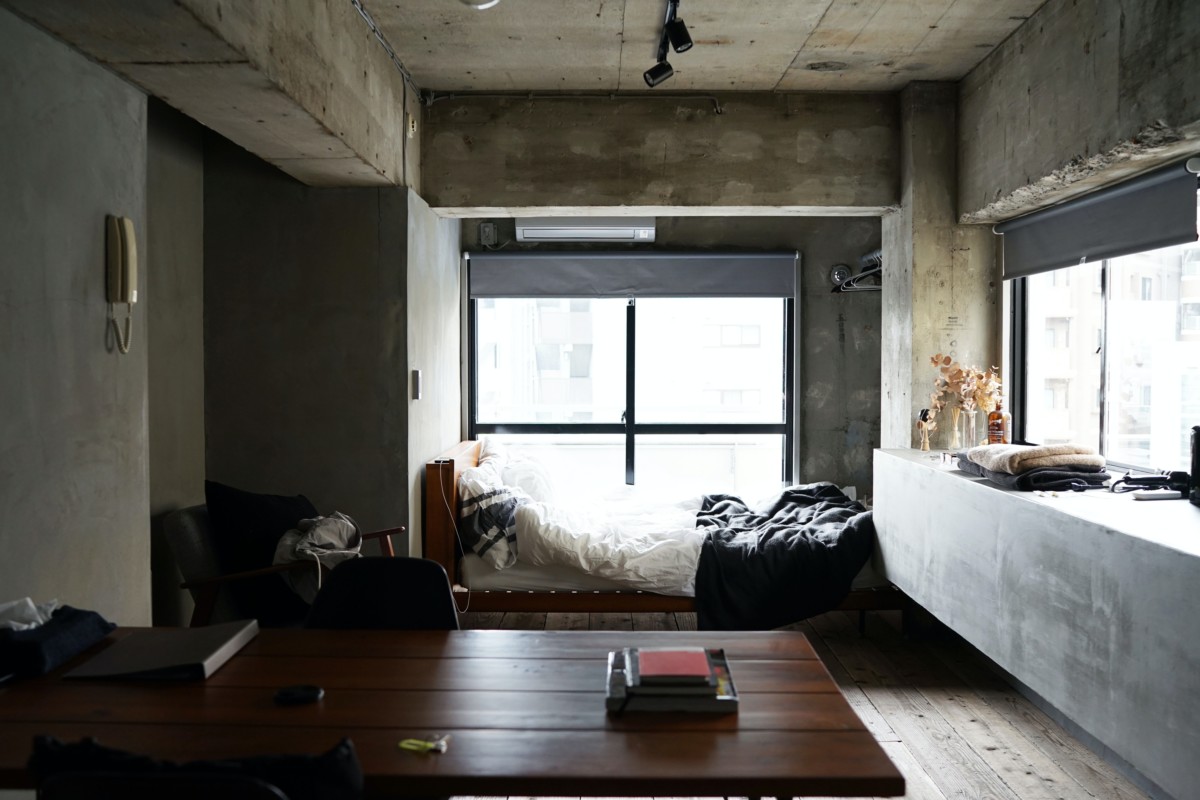Finding affordable apartments has become a challenge, especially as inflation continues to affect home and rental prices. This is especially true if you’re a first-time renter, like a student or a new professional. As prices continue to increase, people are looking for smaller apartments to stay within their rental budget. A popular option for many people is the micro-apartment.
Micro apartments have existed in Europe since the 1950s. Currently, they are an extension of the micro-living movement and can be a good option for those looking to live with less space and money. Many people choose these spaces even if money isn’t a factor. So whether you’re a first-time renter in Seattle, WA, or a seasoned apartment hunter in San Francisco, CA, read on to learn more about these efficient spaces to see if they’re right for you.

What are micro-apartments?
As living has gotten more expensive and tiny living more mainstream, micro-apartments have become a popular choice for many renters. They’re usually located in dense urban areas, like New York City, NY, where space is priced at a premium. These tiny spaces typically have a main room with a small kitchen, a bathroom, and sometimes a balcony. Some are purely efficiency spaces similar to a hotel room, while others provide standard amenities. What many micro-apartments often lack in space and amenities, they make up for in convenience and affordability.
Not all micro apartments are the same. Some share common spaces with other units. Michael Abramsky, Senior Credit Consultant from Credit Firm, believes they can be a good option for some. “If you don’t mind sharing a restroom and cooking area with your neighbors, you can live in some of the most desirable urban areas without paying titanic rental prices.”
Micro-apartment Square footage
Micro apartments are generally 100-500 sq ft., although most average between 250-400 sq ft. For scale, the average two-car garage is about 400 sq ft., meaning many micro-apartments are smaller than that.
Micro-apartment Layout
Similar to a studio apartment or efficiency unit, a micro-apartment is typically a single room that serves as a combined living room, bedroom, and kitchen. They often have a separate bathroom as well. Some have an elevated loft area that can serve as a sleeping space, and many have a balcony.
However, not all micro-apartments are created equal – the key to thriving is utilizing the space well. You want to feel comfortable living, sleeping, and cooking in a small room without sacrificing comfort. Because demand is growing, architects and developers are finding new ways to squeeze more amenities into smaller spaces. Some of these tactics include built-in storage, multi-purpose furniture, and utilizing vertical space. Whatever it looks like, make sure your unit works for you.
How much do micro-apartments cost?
Because of their smaller footprint, micro-apartments tend to cost about 20-30% less than traditional-sized units. “With the rising inflation rate and current economic climate, a micro-apartment may be a good solution for some renters,” says the team at Valiant Credit Repair Services. “They can suit individuals looking to save money or who have a career that involves a lot of travel.”
You can generally find plenty of moderately-priced units in most major cities. There are plenty of options if you’re looking for something fancier, especially with the rise in luxury living. New developments often include next-level amenities like state-of-the-art workout spaces, rooftop terraces, and concierge services. If you’re living in a luxury building, a micro-apartment can cost more than a larger apartment in a cheaper building.

Pros and cons of a micro-apartment
Pros
There are many pros to downsizing. Most importantly, less space means spending less money on utilities such as electricity, heating, and cooling. “A micro-apartment requires less energy to run,” says the team at Sea Turtle Properties. “Because it’s a small space, you don’t have to keep your HVAC running at full blast.”
But beyond efficiency, there are many more pros to downsizing to a micro-apartment.
- Location: Average rents on a one-bedroom unit might be too high for your desired neighborhood; going micro can create affordable options. Claire Kidwell from Moments Marketing & Keller Williams Real Estate suggests micro apartments for people on a tight budget who still want to live in high-density areas with high rental costs. “Micro-apartments can offer unique access to housing locations that would otherwise be inaccessible to many people. In some instances, they provide communal kitchen space and bathrooms.”
- Less is more: Because of limited space, moving to a micro-apartment is an opportunity to downsize and get rid of anything you don’t need. “Micro apartments are a great option for young individuals and are even possible living accommodations for young couples and retirees,” says the team at New Condo Centre. “While they often include fewer amenities than other options, they’re typically located near restaurants, dry cleaners, and large public spaces.”
- Easier to maintain: Living in a micro-apartment means you don’t need to spend as much time cleaning or tidying up. Also, “customizing a small unit can often be a fun, creative design experience,” says Jonathan Sze from Seattle Modern Homes. “Some of the most charming and thoughtful interior designs and arrangements are found in small, unique spaces.”
- No roommates: Micro apartments are perfect for one to two people. While multi-functional furniture such as sleeper sofas can provide temporary extra sleeping space, there isn’t room for two separate beds. Micro-apartments are an attractive and affordable option for those seeking to escape the communal living experience.
Cons
While they are great for many people, micro-apartments have their downsides.
- Storage: Even the most efficient micro-apartment has limited storage. You will likely have to downsize or purchase a storage unit. Joni Foerter, Owner of The Back Dorr, suggests staying organized. “If you live in a micro apartment, be sure to stay organized. Keep essential items and let everything else go.”
- Hosting: Inviting your friends for dinner may be challenging in a micro-apartment; there’s little room for people to sit.
- Upscale = expensive: While a smaller footprint typically means a smaller payment, some micro-apartments are located in luxury buildings with better finishes and amenities, all of which come at a cost. “Micro-apartments are perfect for minimalists on a budget or who want to live in a desirable area,” says Gina Stern of PropertyOnion.com. “Unfortunately, they’re becoming more popular and expensive, and don’t allow space for parties or a larger family.”
- No space to expand: Micro apartments are great for tenants at certain stages of their lives. Unfortunately, they don’t provide space for those considering adding children or aging family members to their household.
Why are micro-apartments becoming popular?
Because of the tiny living boom and significant housing shortage, many people live in smaller homes. This is especially true in large cities, which is where you generally find micro-apartments. “Micro-apartments are becoming more popular as inflation rises and the housing crisis continues,” says Mary Beth from The How-To Home. “These small spaces offer an ideal solution for people who want a smaller place but don’t necessarily need all of the amenities found within larger homes.”
Interestingly, 82% of current micro-apartment residents weren’t initially seeking a smaller unit. However, the location was the deciding factor for most of them when choosing their space. “Micro apartments are gaining popularity among young working professionals because of their affordability and location,” says Nikki Lui from The Cal Agents. “They are often close to shops, restaurants, and access to public transit.”
Where can you find micro-apartments?
You can find micro-apartments in cities worldwide, notably Singapore, London, Paris, Hong Kong, and Tokyo. In the U.S., most big cities have plenty of options — New York, San Francisco, Washington D.C., Seattle, and Denver are hotspots.
As the housing shortage continues and remote work flourishes, developers are seeking housing opportunities in dense areas. Creative developers are also rehabbing unused office space into micro-apartments, leveraging the existing building infrastructure (elevators, stairwells, plumbing, etc.) to offer a more cost-effective approach to creating a large volume of new units.
Pro tip: micro apartments are great for building developers
Micro apartments are not only appealing to renters, but they also attract investors and real estate developers. Like tiny homes, they generally sell for a higher cost per square foot, are easier to rent out, and maximize the building’s living area. – Andy Arakaki from Real Estate and Living Hawaii
Who lives in micro-apartments?
All people live in micro-apartments for many reasons. However, they often appeal to young, professional urbanites or wealthy business people. “Your housing needs vary at different stages of your life,” says Avi Kaufman, Co-founder of Accent Realty. “Perhaps you don’t host large dinners, and you bike or use public transportation to get around. Choosing affordable housing in livelier neighborhoods while reducing your environmental impact is a win-win.” Anybody who values convenience and proximity to their job or school is an excellent fit for a micro-apartment.
The micro life is beginning to appeal to older renters as well. Empty nesters and retirees are also embracing the appeal of downsizing.
Pro tip: consider your rental priorities before going micro
Micro apartments often target a niche tenant market, result in a revolving door of tenants, and can be costly to furnish because you’ll need multifunctional furniture and storage solutions. Ultimately, whether you work from home or commute for work, it’s important to consider your rental living priorities before trying an urban micro apartment for size. – William Logan, REALTOR with Hunt Chicago

How to make micro-apartments work for you
The key to making a micro-apartment work is thinking creatively; traditional organization and layouts likely won’t work. “Micro-apartments are great for a minimalist or someone looking for a budget-friendly space,” says William Ninoyan from Pyramid Credit Repair. “However, it can be challenging for most looking to move in with a loved one or pet because of the limited space.”
Here are a few tips to help create a comfy and welcoming environment.
- Consider the apartment’s layout, shape, and features: More traditional square or rectangular spaces will feel larger and more open than those with sharp angles, tiny nooks, and small windows. “With four rooms crammed into one, it’s essential the layout works for you,” says Katrina Amurao from Metro Vancouver Home Source. “The floor in a micro apartment is probably more important than in any other style of apartment.”
- Look for furniture that can serve many purposes: Compact apartments benefit from furniture that can perform multiple functions. Try adding a removable-top ottoman to create a small table and extra storage. For the work-from-home crowd, a kitchen table can double as a desk.
- Think about a Murphy Bed: While more expensive than traditional sleeping solutions like beds and futons, Murphy Beds are the easiest way to create space in a micro-apartment. Considering that you only use it for a third of the day, investing in a space-saving option creates lots of space.
- Try living vertically: You have an advantage if your unit comes with a loft or built-in floor-to-ceiling storage units. But even if it doesn’t, there are several options that will work, including customizable wardrobe systems and floating shelves.
- Keep it clean & clutter-free: Decluttering is crucial. Before you move in, decide what you need and can throw away. Then, make sure everything has a place. Livable space is at a premium in a micro-apartment, so use a combination of storage options to make it work for you.
Pro tip: consider painting your micro-apartment
Picking a color scheme depends on many factors, including budget, personal style, and space constraints. Understated colors, like gray and brown, are a common and popular choice. On the other hand, bold colors can create a more dynamic feel in small spaces. For a micro apartment, it’s important to pick a color that feels welcoming and inviting at night. – PaintCoPro
Pro tip: make your small office work for you
Optimize your small home office by implementing a 5-Minute Rule – dedicate the last five minutes of each workday to decluttering and organizing your workspace. This simple habit ensures a consistently tidy environment, mirroring the efficiency of a well-maintained professional office. – Celestial Cleaning Service
Micro apartments: are they right for you?
While they may not be a great solution for everyone, micro-apartments offer benefits that meet the needs of many renters. As you’re thinking about your next space, take the time to list out the features that are most important to you, and consider micro options as you search. If you decide to rent one, ensure you’re ready for the unique living situation they provide.
Struggling to budget for a rental home? Use the Redfin rental affordability calculator to figure out how much rent you can afford.



























 United States
United States Canada
Canada